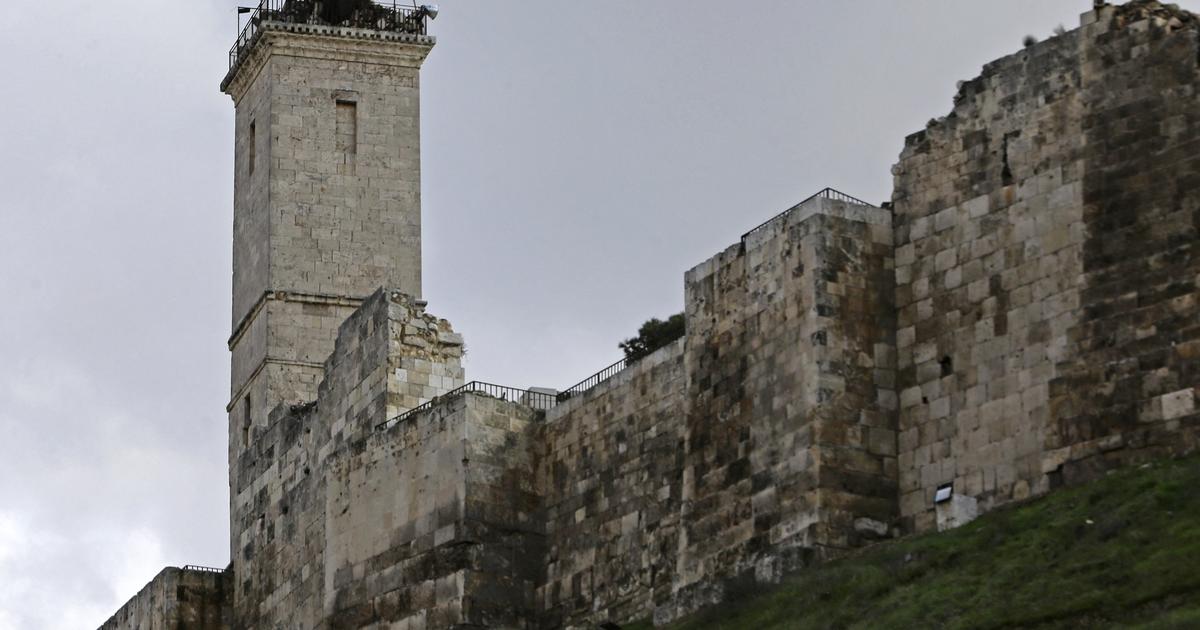Aleppo in Syria, Antakya (ancient Antioch) or Sanliurfa in Turkey: some of the oldest cities in the world, former stages of the Silk Road, home to architectural gems, were hit by Monday's earthquake.
Aleppo
The ancient citadel of Aleppo is damaged following the earthquake.
AFP
Aleppo has been inhabited since at least 4000 BC, thanks to its strategic position between the Mediterranean and Mesopotamia.
Specialized in the manufacturing industry, capital of the famous soap, it was the second city of the Ottoman Empire in the 19th century.
During the civil war in Syria (2012-2016), the fighting between the Syrian army, aided by its Russian ally, and the insurgents in this city in the north-west of the country had already severely damaged it.
Read alsoEarthquake in Turkey and Syria: death toll exceeds 20,000
The 13th century citadel had seen a section of its ramparts collapse, as had the Seljuk minaret of the Umayyad mosque, while the souk with its sometimes century-old shops had been partially destroyed by the flames.
“
More than 10% of the historical monuments of Aleppo
” had been destroyed, according to Unesco.
After Monday's quake, parts of the Ottoman mill inside the citadel "
tumbled down
"
, and "parts of the northeast defensive walls cracked",
the General Directorate of Antiquities and Museums reported to Damascus
.
Large parts of the lighthouse dome of the Ayyubid Mosque inside the citadel
,
also collapsed, including the entrance to the Mamluk defensive tower.
UNESCO listed the old town as a World Heritage Site in 1986, and in 2013 placed it on the list of sites in danger.
Read alsoIn Aleppo, the bombs gave way to hunger and misery
Antakya
Antakya, the ancient Antioch, is today in ruins.
The city was the rival of Alexandria, Roman, Greek, Ottoman, then a popular resort of the French mandate on the shores of the Mediterranean after the First World War.
It is located in southern Turkey, not far from the border with Syria, from which it hosts a large number of refugees driven out by the war.
Founded around -300 BC by Seleucus, a general of Alexander the Great, it was the capital of the immense Seleucid Empire, which extended for nearly three centuries along the Mediterranean and reigned over part of the Asia Minor, from Babylon to Mesopotamia and Anatolia to Iran.
It was also one of the key cities of the Silk Road.
Later integrated into the Roman Empire, then Byzantine,
Antioch is known for its multiculturalism, Greeks and Jews in particular rub shoulders there.
It then became a key city of nascent Christianity and remains important for the Christian churches of the East.
Sanliurfa
Göbekli Tepe, the oldest known shrine in the world.
Paul Polydorou.
All rights reserved 2023 / Bridgeman Images
Located in the south-east of Turkey, not far from the border with Syria, the province of Sanliurfa (“Urfa the Glorious”) is notably home to the oldest known sanctuary in the world, Göbekli Tepe.
This site, which has been listed as a UNESCO World Heritage Site since 2018, is among those that may have been damaged, the organization reported on Monday.
More than 7000 years before Stonehenge in England and the Egyptian pyramids, thousands of humans gathered at Göbekli Tepe (“the potbellied hill” in Turkish), to meditate between its richly adorned megaliths.
Göbekli Tepe is a godsend for this impoverished and long-neglected province, where Syrian refugees now make up a quarter of the population.
Read alsoEarthquake in Turkey: in Iskenderun, entirely dependent on external aid
Located on a route used since antiquity to travel between Anatolia and northern Mesopotamia, ancient Edessa was a major center of Syrian culture and featured prominently in the conflicts between the Parthians and Rome.
The county of Edessa was one of the states created in the Middle East by the Crusaders in 1098, before being annexed to the Ottoman Empire and being, under the name of Urfa, the scene of massacres of Armenians in 1895 and 1915. During the War of Independence, Urfa distinguished itself in 1920 by its resistance to French troops.

